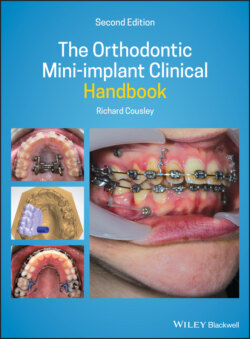Читать книгу The Orthodontic Mini-implant Clinical Handbook - Richard Cousley - Страница 35
2.2 Interproximal Space
ОглавлениеThe literature provides data on the average amount of interproximal space available for mini‐implant insertion, but it is crucial to understand that there is wide individual variation depending on the adjacent teeth's root sizes, shapes (degree of root taper and curvature) and alignment (i.e. root proximity or separation). Arguably, this almost means that ‘average’ figures are meaningless in individual patients, since each site must be assessed individually for bone volume (Figure 2.2). However, mean measurements do provide useful information such as highlighting that there is more space available on the palatal than the buccal aspect of the posterior maxillary alveolus (e.g. 5 and 3 mm, respectively). This is due to the differential number and shape of the molar roots, specifically the single palatal versus the two buccal roots of the molars (Figure 2.1).
Assuming reasonable tooth alignment, the typical buccal alveolar insertion sites for the maxilla are mesial to the first molar, and adjacent to the canines and central incisors, and for the mandible, adjacent to the molars and premolars [32]. Crucially, limited interproximal space is no longer regarded as a significant barrier since it may be increased in clinical practice by both preinsertion root divergence and oblique mini‐implant insertion, as described in Chapter 5.
Figure 2.2 A panoramic radiograph which illustrates the typical variations in interproximal spaces, as affected by dental crowding, root length, morphology and tip. For example, the left mandibular first premolar's distal tip has resulted in more than average space between it and the second premolar, but less between it and the canine root.
